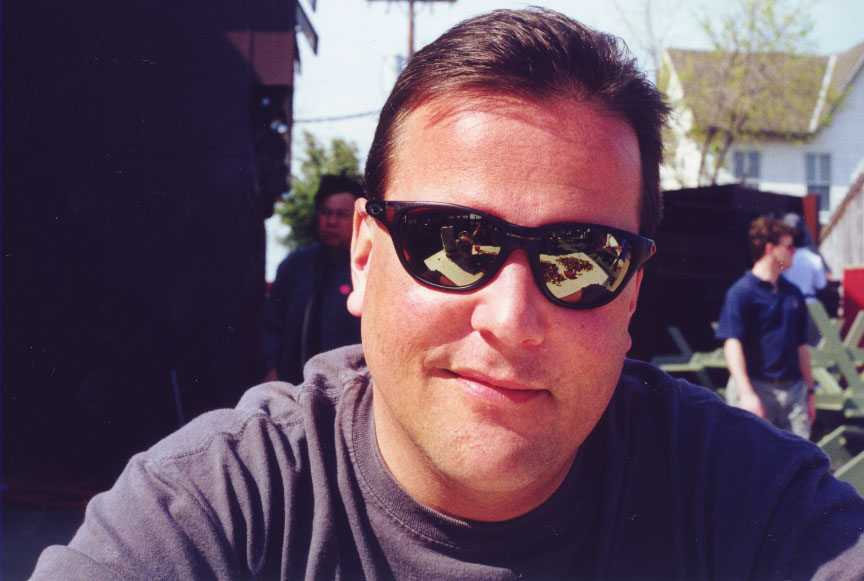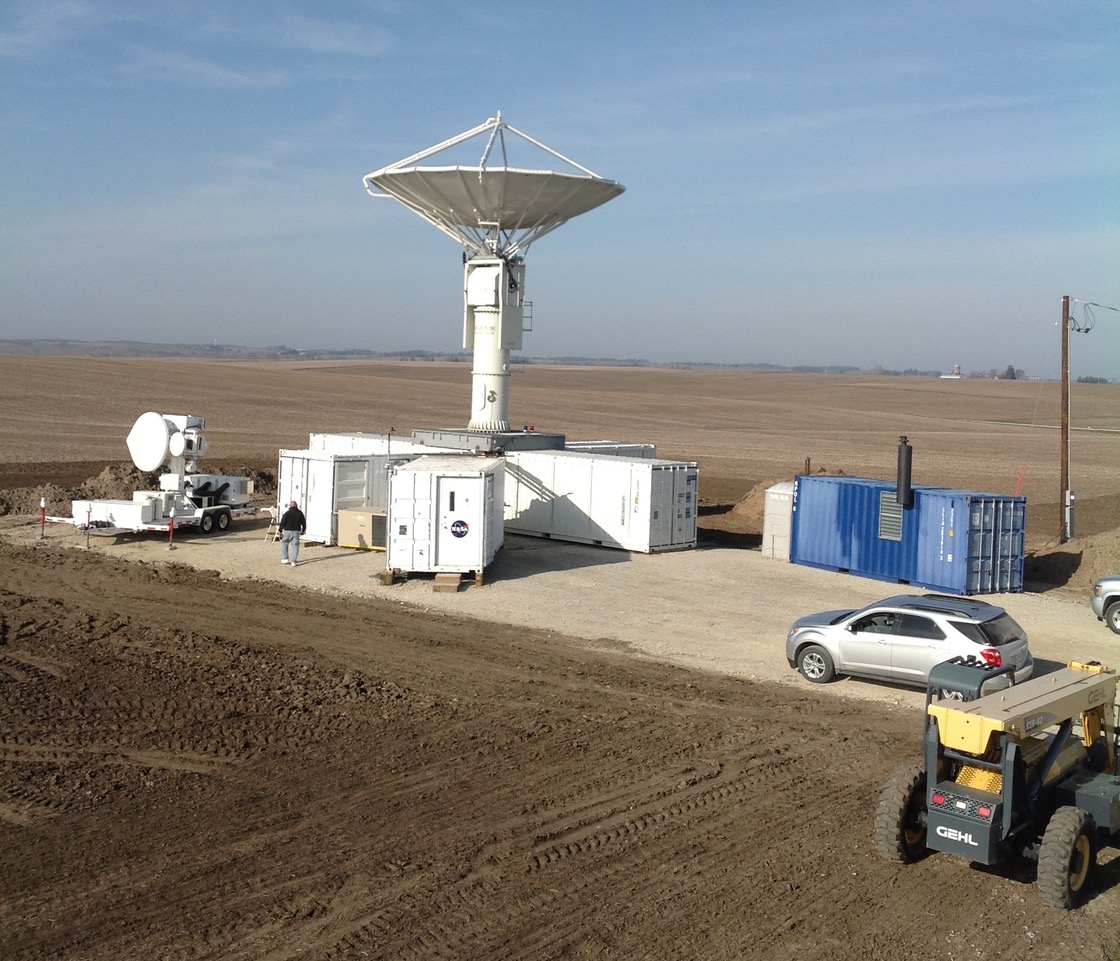
Name: David B. Wolff
Title: Chief, Earth Science Field Support Office, NASA’s Wallops Flight Facility
Formal Job Classification: Meteorologist and Supervisory Research Scientist
Organization: Code 610W, Earth Science Field Support Office, Wallops Flight Facility
What do you do and what is most interesting about your role here at Goddard? How do you help support Goddard’s mission?
My main job is working as the Global Precipitation Measurement satellite (GPM) ground validation (GV) system manager. I manage a large network of ground-based precipitation measuring instruments consisting of radars, rain gauges and disdrometers, devices that can measure the size and speed of individual droplets of precipitation. I also manage the Wallops GPM Precipitation Research Facility (PRF) which serves as a semi-permanent field site for GPM GV activity.

The linchpin of the Wallops PRF is NASA’s S-band Polarimetric Radar, referred to as NPOL. NPOL is a 60-ton transportable radar that is capable of obtaining three-dimensional scans of precipitating clouds and storms. GPM has also deployed numerous other ground-based instruments that are used to validate the NPOL Delmarva-wide rain estimates. In turn, the NPOL data is used to help validate space-borne global rainfall retrievals from GPM and its constellation partner satellites.
Why did you become a meteorologist?
I grew up in Louisiana and Texas and was always watching the weather. In particular, I was fascinated with hurricanes. When I was a teenager, I started chasing hurricanes with my friends. We would ride in my Mustang and drive along the Gulf Coast from Texas to Florida. I would get in my car and drive to where a hurricane was heading for landfall, always cautious to stay well inland to avoid storm surge, and never chasing major hurricanes. If we were lucky enough to get in place, it was truly exhilarating!
Now I’m a dad so I no longer chase hurricanes, but I have been a meteorologist for more than 30 years, joining NASA Goddard three days after graduating with a Master of Science degree in meteorology from Texas A&M University.
How did you come to Goddard and Wallops?
I started at Goddard in May of 1988. One of my A&M professors, Gerald North, had close ties to Goddard and referred me to the opportunity. My initial job was to help establish a ground validation team for the Tropical Rainfall Measurement Mission (TRMM). TRMM, which launched in 1997, was originally scheduled to be a three-year mission, but actually maintained operations for nearly 17 years!
In July 2012, I moved to Wallops to help develop the Wallops PRF and to coordinate logistics for several GPM field campaigns.
What is the goal of the Wallops PRF?
We provide state of the art surface rainfall measurements to validate the GPM space-born rainfall measurements. The Wallops PRF is one site among many used for GPM validation.
Validation is a multi-layered process. Individual gauges provide only point estimates of precipitation, so to be useful, we need deploy hundreds of gauges over a wide area to provide useful validation for radar estimates from NPOL. The radar can then provide three-dimensional estimates of precipitating systems that can be used to help validate the space-based observations from GPM and other satellites.
Is the Wallops PRF part of an international validation team?
Within NASA, we are part of the Precipitation Measuring Missions (PMM) Program which includes TRMM and GPM. The PMM Science Team, chosen every three years, consisting of academic, industry and international partners, serves as a scientific advisory committee with over 60 members. Our goal is to get input about how to improve our space-based precipitation estimates from experts around the world. Every year, we have a PMM Science Team meeting where everyone comes together to discuss their results, present their findings and suggest new research topics.
What are the scientific objectives of GPM?
GPM is an international network of satellites that provide global observations of rain and snow. GPM is a joint mission between NASA and the Japan Aerospace Exploration Agency (JAXA) as a global successor to the very successful TRMM. GPM employs a constellation of other satellites working in conjunction to provide near-real-time global rainfall estimates. Other partners include the National Oceanic and Atmospheric Administration (NOAA), France, India, the European Organisation for the Exploitation of Meteorological Satellites (EUMETSAT), Brazil, Korea and others.
What was your favorite field campaign?
Since 1992, I have been on 14 field campaigns for both TRMM and GPM. For GPM, we concentrated on more northern sites where snow was present. The major GPM field campaigns were conducted in Ontario, Canada, Oklahoma, Iowa, South Carolina, Washington and Korea.
My most recent field campaign was GPM’s OLYMPEx from November 2015 to January 2016. This was a particularly difficult deployment as we had to move our 60-ton NPOL radar from Wallops to a mountain on the coast of Washington state. We were very fortunate to have the support of the Quinault Indian Nation (QIN).
It took about 18 months to prepare all the paperwork including arranging leases. We coordinated with the QIN, the U.S. State Department, the U.S. Forest Service and the State of Washington. In order to safely install the radar, we had to make some major ground improvements on the mountain, including building a fenced area surrounding the site. In agreement with the QIN, once the radar had been removed from the site, the area and fence were left behind so that they could use it for installation a cell tower to improve their telecommunications. Overall, OLYMPEx was very successful and was a wonderful experience.
What makes Wallops special?
NASA’s airborne science program is run out of Wallops. We have several specially modified aircraft for conducting atmospheric research. We also have NASA sounding rocket and Antares launch capability. I have the best office on base because I look out onto both runways.
What I like most about being here is that Wallops is small enough that you quickly get to know everyone and it is very much a family here. We have a total of about 2,000 people including contractors.
Also, we are very close to the Atlantic Ocean and its beaches. I want to get a boat soon. For now, I fish from the shore.
What part of the world has the most interesting weather to you?
There is a lot of great weather, but I would say Japan. They have the full gamut, areas of heavy snow, typhoons and also very heavy rainfall. Their weather ranges from tropical rainfall in the south to heavy winter snows in the north.
Is there someplace in the world that you want to visit, or someplace you have been and want to go back and visit again?
Without question, that would be Australia. Darwin has some of the tallest thunderstorms in the world, saltwater crocodiles and box jellyfish, which are very lethal. Sydney is one of the most beautiful cities in the world. The Australians I met were very friendly. I’ve been there five or six times and I would love to take my family there.
What is the best thing that ever happened to you at Wallops?
Wallops is where I met my lovely wife, Rhonie, who also works here measuring ozone. We have two wonderful kids, a boy and a girl.
By Elizabeth M. Jarrell
NASA’s Goddard Space Flight Center, Greenbelt, Md.

Conversations With Goddard is a collection of Q&A profiles highlighting the breadth and depth of NASA’s Goddard Space Flight Center’s talented and diverse workforce. The Conversations have been published twice a month on average since May 2011. Read past editions on Goddard’s “Our People” webpage.

























